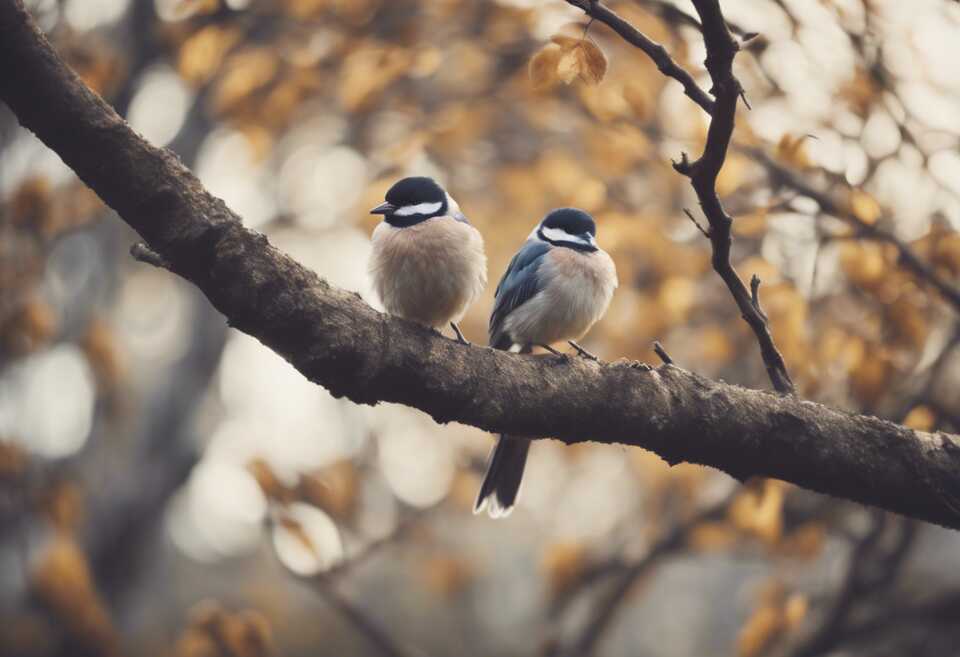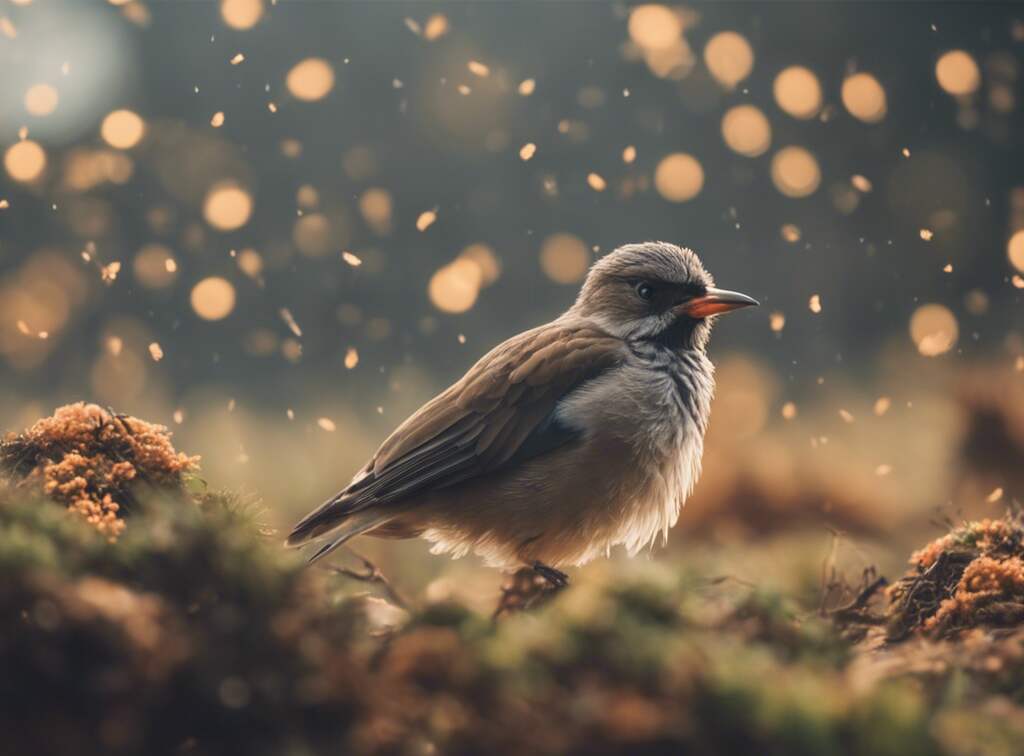When it comes to the natural world, few creatures capture our imagination quite like wild birds. From the soaring grace of the eagle to the vibrant plumage of the songbird, these feathered wonders are a true marvel of evolution. But have you ever wondered just how long these remarkable creatures can live in the wild?
Table of Contents
The Remarkable Longevity of Wild Birds
The Factors that Influence Bird Lifespan
The lifespan of wild birds is influenced by a variety of factors, including their size, habitat, and evolutionary adaptations. Smaller birds, such as warblers and chickadees, tend to have shorter lifespans, often living just a few years in the wild. In contrast, larger birds, like albatrosses and parrots, can live for decades, with some species reaching the ripe old age of 80 or more.
The environment in which a bird lives also plays a significant role in its longevity. Birds that inhabit areas with abundant food sources, minimal predators, and stable weather patterns generally enjoy longer lives than those that face constant threats and resource scarcity. Additionally, birds that are adept at avoiding predators, finding food, and adapting to changes in their environment tend to have a better chance of reaching old age.
| Bird Group | Lifespan Range |
|---|---|
| Songbirds | 2-10 years |
| Birds of Prey | 10-30 years |
| Waterfowl | 10-30 years |
| Gamebirds | 1-5 years |
| Parrots | 20-80 years |
| Penguins | 15-30 years |
| Seabirds | 10-50 years |
| Shorebirds | 3-15 years |
| Raptors | 10-30 years |
| Owls | 10-40 years |
Please note that these lifespans are approximate ranges and can vary based on factors such as species, environmental conditions, and captive versus wild populations.
Record-Breaking Lifespans of Wild Birds
While the average lifespan of a wild bird may be relatively short, there are some truly remarkable exceptions. One of the most famous examples is the Laysan albatross, a seabird that can live for over 60 years in the wild. In fact, a Laysan albatross named Wisdom was born in 1951, and first banded by researchers in 1956 and is still going strong, making her one of the oldest known wild birds in the world at 73 years of age.
Another impressive longevity record belongs to the African grey parrot, a highly intelligent and social bird species. These parrots have been known to live for over 60 years in captivity, and it’s not uncommon for them to reach their 20s in the wild, a staggering lifespan for a bird of their size.
The Importance of Studying Bird Longevity
Understanding the longevity of wild birds is not just a matter of curiosity; it has important implications for conservation and ecological research. By studying the factors that contribute to a bird’s lifespan, scientists can gain valuable insights into the overall health and resilience of avian populations. This information can help guide conservation efforts, inform habitat management practices, and even shed light on the broader dynamics of ecosystems.
Moreover, the remarkable lifespans of some wild birds can provide clues about the evolution of longevity and the mechanisms that allow certain species to defy the typical lifespan of their kind. By unlocking the secrets of avian longevity, researchers may uncover insights that have broader applications in the fields of biology, medicine, and even human aging.
The longevity of wild birds is a testament to the incredible adaptability and resilience of these feathered wonders. From the diminutive warblers to the majestic albatrosses, the natural world is home to a diverse array of bird species, each with its own unique lifespan and evolutionary story. By studying and celebrating the remarkable lifespans of wild birds, we can gain a deeper appreciation for the complexity and wonder of the natural world, and find inspiration in the enduring spirit of these remarkable creatures.

Factors Influencing Bird Lifespan in the Wild
When it comes to the natural world, the lifespan of birds is a fascinating topic that often sparks curiosity. From the diminutive hummingbird to the majestic eagle, each avian species has its own unique longevity characteristics. Understanding the factors that influence bird lifespan in the wild is crucial for conservation efforts and enhancing our appreciation of these remarkable creatures.
Avian Diet and Nutrition
One of the primary factors that can affect a bird’s lifespan is its diet and overall nutritional intake. Birds that have access to a diverse and abundant food supply tend to live longer than those that face food scarcity or limited dietary options. A well-balanced diet rich in essential nutrients, vitamins, and minerals can bolster a bird’s immune system, improve its reproductive success, and contribute to its overall health and longevity.
Predation and Survival Instincts
The threat of predation is a constant challenge for birds in the wild. Species that have developed effective survival strategies, such as keen eyesight, agility, or the ability to hide and conceal themselves, tend to have a higher chance of avoiding predators and living longer lives. Factors like habitat quality, the presence of natural predators, and a bird’s ability to adapt to its environment can all play a role in its lifespan.
Environmental Conditions and Adaptability
The various environmental conditions that birds encounter in their natural habitats can also significantly influence their lifespan. Birds that are able to adapt to changes in temperature, weather patterns, and other environmental factors are more likely to survive and thrive. Species that can cope with extreme weather events, such as droughts, storms, or harsh winters, often exhibit greater longevity than those less equipped to handle such challenges.
Reproductive Strategies and Life Cycles
The way a bird approaches its reproductive life cycle can also impact its lifespan. Some species, such as seabirds and birds of prey, tend to have longer lifespans and invest more energy into their offspring, while others, like small songbirds, often have shorter lifespans but produce multiple broods each year. The trade-off between reproductive output and longevity can vary significantly among different avian species.
Disease, Parasites, and Health Factors
Like any living organism, birds can be susceptible to various diseases, parasites, and health-related issues that can impact their lifespan. Factors such as exposure to toxins, the presence of disease-carrying vectors, and the bird’s overall immune system function can all play a role in determining its longevity. Birds that can maintain good health and fight off infections and parasites are more likely to live longer in the wild.
Human Intervention and Conservation Efforts
The impact of human activities and conservation efforts cannot be overlooked when considering the factors that influence bird lifespan in the wild. Habitat destruction, pollution, hunting, and other human-caused threats can significantly reduce the lifespan of bird populations. Conversely, conservation initiatives that protect bird habitats, regulate hunting, and mitigate human-related risks can help to support and enhance the longevity of various avian species.
The lifespan of birds in the wild is influenced by a complex interplay of factors, from diet and nutrition to predation, environmental conditions, reproductive strategies, and health-related issues. Understanding these factors is crucial for developing effective conservation strategies and ensuring the long-term survival of the diverse avian species that grace our planet.
Conclusion
The Remarkable Longevity of Wild Birds
As we’ve explored, wild birds can live remarkably long lives, with some species reaching ages that defy the typical lifespan of their smaller size. From the long-lived albatross to the resilient ravens, the natural world is teeming with avian species that possess an extraordinary ability to endure and thrive for decades.
This impressive longevity is a testament to the incredible adaptations and evolutionary strategies that birds have developed over millions of years. Their lightweight yet sturdy skeletal structures, efficient respiratory systems, and specialized feathers all contribute to their remarkable resilience and longevity. Additionally, the advanced cognitive abilities of many bird species allow them to navigate the challenges of their environments with skill and resourcefulness.
Factors Influencing Bird Lifespan in the Wild
Of course, the lifespan of wild birds is not solely determined by their inherent biological attributes. A range of environmental and behavioral factors also play a crucial role in determining how long a bird may live. Understanding these factors is essential for appreciating the unique challenges and adaptations that allow certain species to thrive for so long in their natural habitats.
One of the primary factors influencing bird lifespan is the availability and quality of their food sources. Birds that have access to a diverse and nutrient-rich diet are better equipped to maintain their overall health and resilience. This is particularly true for species that rely on foraging in resource-rich environments, such as coastal regions or lush forests. In contrast, birds living in areas with limited or inconsistent food supplies may face greater challenges in meeting their nutritional needs, potentially reducing their lifespan.
Additionally, the presence and prevalence of predators can have a significant impact on a bird’s lifespan. Species that have evolved effective strategies for avoiding or defending against predators, such as the use of complex flight patterns or the formation of protective flocks, are more likely to survive to advanced ages. Conversely, birds that are particularly vulnerable to predation may face a higher risk of early mortality.
The quality and availability of suitable nesting sites and roosting areas are also crucial factors in determining the lifespan of wild birds. Birds that can reliably access secure, well-protected nesting sites and roosts are better equipped to raise their young successfully and avoid various threats, such as inclement weather or opportunistic predators.
Furthermore, the ability of birds to adapt to changing environmental conditions, such as shifting climate patterns or habitat alterations, can play a significant role in their longevity. Species that can successfully adjust their behaviors, foraging strategies, and nesting preferences are more likely to thrive in the face of such challenges, increasing their chances of reaching advanced ages.
It’s important to note that the lifespan of individual birds can also be influenced by factors such as genetic predisposition, the presence of disease or injury, and even chance occurrences, such as unexpected environmental catastrophes. Despite the remarkable longevity of many wild bird species, there are always risks and uncertainties that can impact their survival.
The remarkable longevity of wild birds is a testament to the incredible adaptations and evolutionary strategies that these creatures have developed over millennia. By understanding the various factors that influence their lifespan, we can gain a deeper appreciation for the resilience and resourcefulness of these remarkable beings, and work to protect the habitats and ecosystems that support their continued thriving.
As we continue to navigate the complexities of our changing world, the enduring presence of these long-lived avian species serves as a powerful reminder of the enduring vitality of the natural world.



